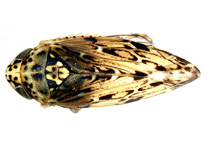Abstract
In revising the Indo-Pacific scyllarine lobsters, Holthuis (2002) proposed a new genus, Antipodarctus, for Scyllarus aoteanus Powell, 1949 (type locality: Great Barrier Island, New Zealand), and a new genus, Crenarctus, for two species, Scyllarus bicuspidatus De Man, 1905 (type species; type locality: Flores Sea, Indonesia) and S. crenatus (Whitelegge, 1900) (type locality: off Wata Mooli (= Wattamolla), New South Wales, Australia). According to Holthuis (2002), Antipodarctus is distinguished from Crenarctus only by the presence of an additional carina on the fourth antennal segment. Examination of the male holotype of A. aoteanus in 2009 (Auckland War Memorial Museum, registration number MA76171) revealed that the original diagnosis of Antipodarctus was incorrect — A. aoteanus does not have an additional carina on the fourth antennal segment and is indistinguishable from C. crenatus. Moreover, a recent molecular phylogenetic study of the slipper lobsters (Yang et al. 2012) showed that Antipodarctus and Crenarctus are indistinguishable and that A. aoteanus and C. crenatus are conspecific. Being conspecific, A. aoteanus and C. crenatus must also be congeneric and so both genera cannot be maintained. In the online appendix to their paper (Appendix A. Supplementary material, doi:10.1016/j.ympev.2011.09.019), Yang et al. (2012) assumed that the name Antipodarctus had priority over Crenarctus on the basis of page priority in Holthuis (2002) (p. 551 for Antipodarctus, p. 659 for Crenarctus) (see discussion in Nemésio 2007). According to Article 24.2.2 of the International Code of Zoological Nomenclature (ICZN 1999), however, priority of taxon names simultaneously published in the same paper is determined by the deliberate choice of the first reviser and not by order of appearance in the original publication. Additionally, the appendix of Yang et al. (2012) was only published as online supplementary information, rather than as part of the main printed article. In any case, the ‘action’ in the appendix would not be nomenclaturally valid because it was simply stating what the authors thought to be a Code requirement rather than being a deliberate First Reviser action (Article 24.2, ICZN 1999). The status of Antipodarctus and Crenarctus thus remains unresolved because no formal (Code-compliant) action has been taken to fix name priority.

